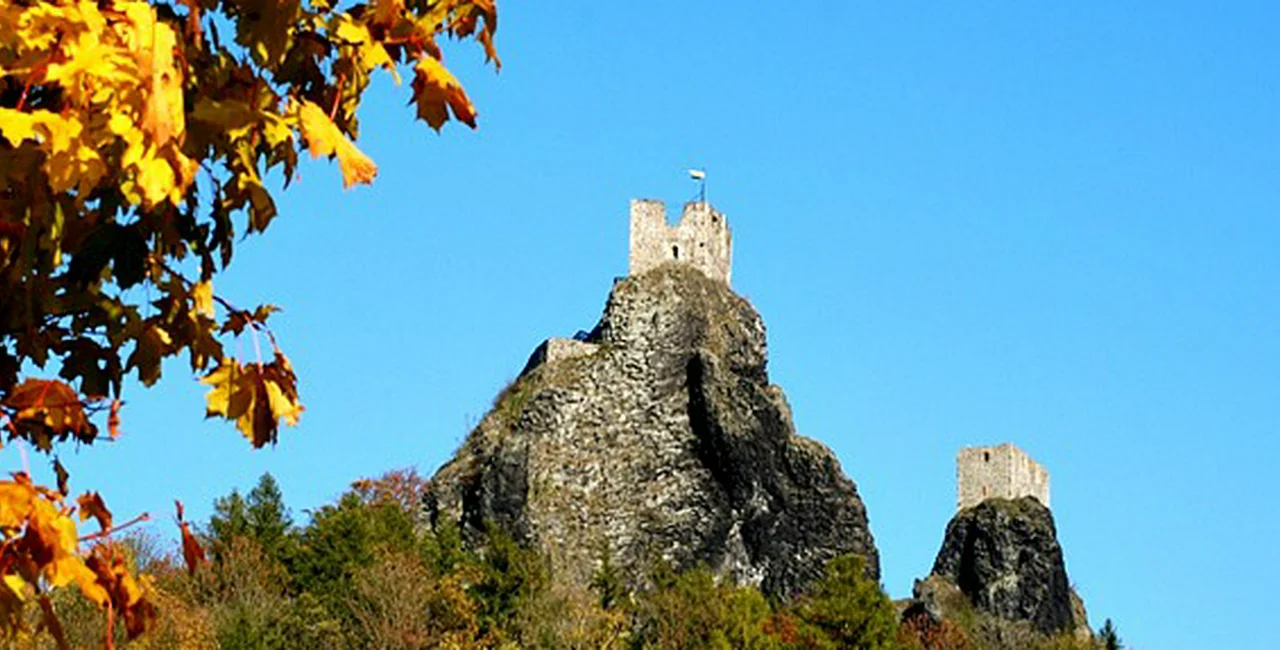The Czech Republic is dotted with ruined castles. Hidden in forests or standing on hilltops, the crumbling landmarks are a striking reminder of the passage of time as well as great subjects for pictures. Here are five of the more interesting ruins to visit this fall when autumn ambiance is at an all time high.
Back home as a kid when I dreamed of visiting ancient ruins, Ronov, tucked away in the forest on a small hill, was sort of how I pictured it. Because the 14th century ruin is somewhat secluded, you will probably want to get close to get some of the better shots. With the forest as a backdrop, this ruin turns out well throughout the year, though autumn would be when it’s at its most picturesque.
Visiting: Because the ruin is located in the beautiful Kokořinsko region you are spoiled for choice as a number of scenic trails lead to Ronov. Check this link and choose the one best for you. The KTČ map for the region is number 16. The nearest train stop is Kravaře.
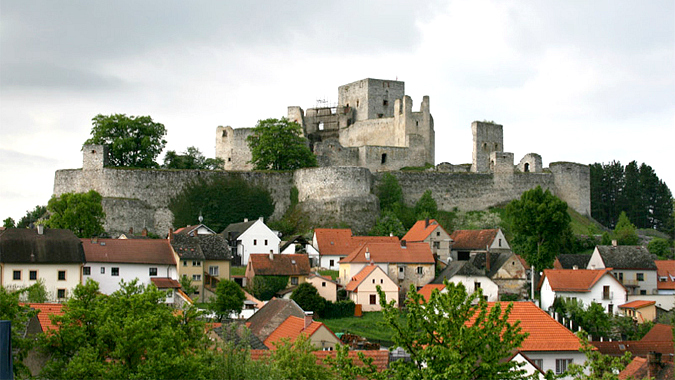
Photo: www.hrad-rabi.eu
In contrast to Zbořený Kostelec, this castle ruin is much more complete. In fact it is the largest ruin in Bohemia. It still possesses most of its original exterior walls, palace and tower, dating from between the 13th century for the central portion and the 15th century for the external fortifications. The sheer size of the structure and the surrounding wooded hills presents lots of opportunities for sweeping panoramas. To get up close though, you will have to pay an admissionwhich can include a guide depending on what part you want to see, though only the exteriors can be photographed.
In order to get to Rabí on foot, the shortest route would be taking the yellow from Sušice train station until you reach, Velká Chmelná, switching to the green until you reach Žichovice, where you follow the yellow across the river to Rabí. Actually there are two more ruins quite close by, The All Saints’ Chapel ruin (zřícenina kaple Všech Svátých) and the ruin of Castle Džbán. Trails and other landmarks can be seen here. There is also a bus leaving from Na Knížecí in Prague 5.
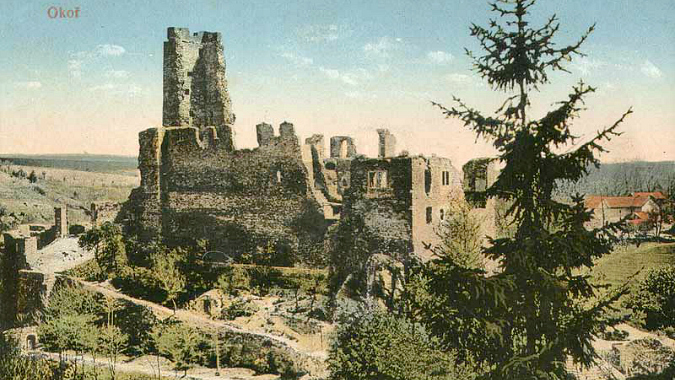
Photo: www.obecokor.cz
Okoř is located quite close to Prague, near Kladno. The castle was built in the 14th century on the site of an already existing fortifications. Today Okoř is an incomplete jigsaw of external walls, a partially collapsed tower and lower battlements.
This is one ruin in which it past to get up close. Not as dramatic as Trosky, Okoř reveals itself in the smaller details, arches filled with sun, walls sprouting greenery and the textures of the crumbling stonework.
For hikers, you can either start in Roztoky and follow the blue or take the red path from Horoměřice. Longer hikes are possible, starting in Prague. Check this link for routes or grab map 36 (okolí Prahy – západ) from KČT. By bus, take the 350 from Dejvice.
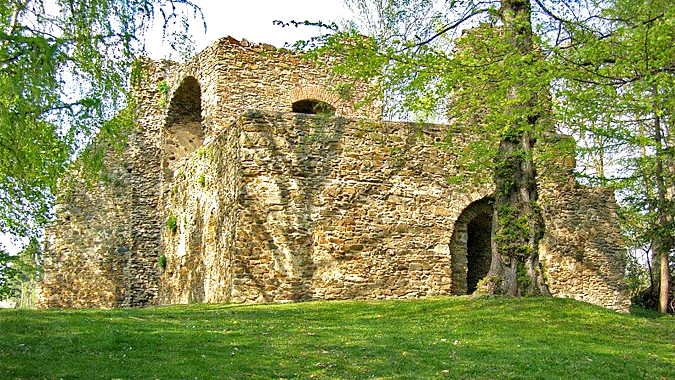
Photo: pardubice-region.com
So far the tips have covered castle ruins. The well-preserved remains in Svojšice are of a fortress. The thick solid fortifications are probably one of the main reasons for its longevity, so unlike some of the other ruins mentioned, visitors can get a sense of the interior life of this period, well at least in a fortress. The fortress was built in the fourteenth century and destroyed during the Thirty Years’ War.
To hike, the most accessible starting point would be from Heřmanův Městec, which you can reach by train then follow the red path as in this link or according to KČT map 45. There is also a bus from Heřmanův Městec which stops at Svojšice.
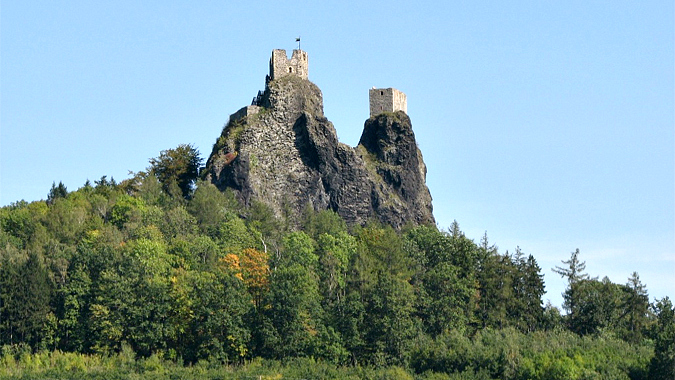
Photo: www.hrad-trosky.eu
On the edge of Bohemian Paradise (Český ráj), north of Prague, stands one of the country’s most iconic ruins. Fittingly named, Trosky Castle (trosky means ruins) was built in the fourteenth century. Today only the two towers, known as panna and baba, and the 15m tall battlements running between them remain.
Because it looms so starkly against the landscape, Trosky Castle is an attractive subject for photographs. The imposing forms recall any number of gothic fantasies, though the real history is as fascinating. The castle served as the center of Catholic forces during the Hussite War. During the Thirty Years’ War which ravaged Europe the castle was burned and left as the ruins we know today.
Trosky Castle makes a good hiking destination. Grab the Český ráj map (number 19) from Klub Českých Turistů (KČT) available at most bookstores and outdoor shops or check this line. Otherwise you can get a bus from Prague to Turnov and then Turnov to the stop Troskovice, Tachov, Trosky. The ruins are a short walk.
Here is another ruin with an almost apt name. Zbořený Kostelec is literally demolished little church, though the ruin is in fact a castle again from the 14th century. (Kostelec is a local diminutive form, not widely used in Czech). The ruin looks out from a small cliff onto a bend on the Sázava.
The ruin is in such a state of deterioration that from afar you would almost think they were rock formations. The appeal in this ruin is simply its aged condition. You get a sense of the centuries shed in the gaps and missing stones. This ruin deserves both close up shots and from across the river in the village also called, imaginatively, Zbořený Kostelec.
Hikers can take the red path from Čerčany. A shorter route is possible from Týnec nad Sázavou, along the blue and then turn east on to the red path and follow it about one kilometer. The KČT map is 40 or you can check this link. Otherwise there is a bus leaving from Týnec nad Sázavou and going to the village Zbořený Kostelec, which I will repeat is on the other side of the river.
**
Have we missed any ruins that are worth an autumn walk?











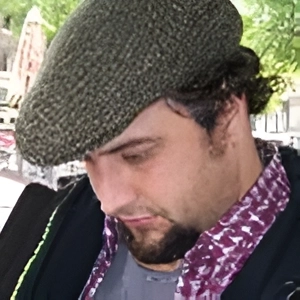
 Reading time: 5 minutes
Reading time: 5 minutes 